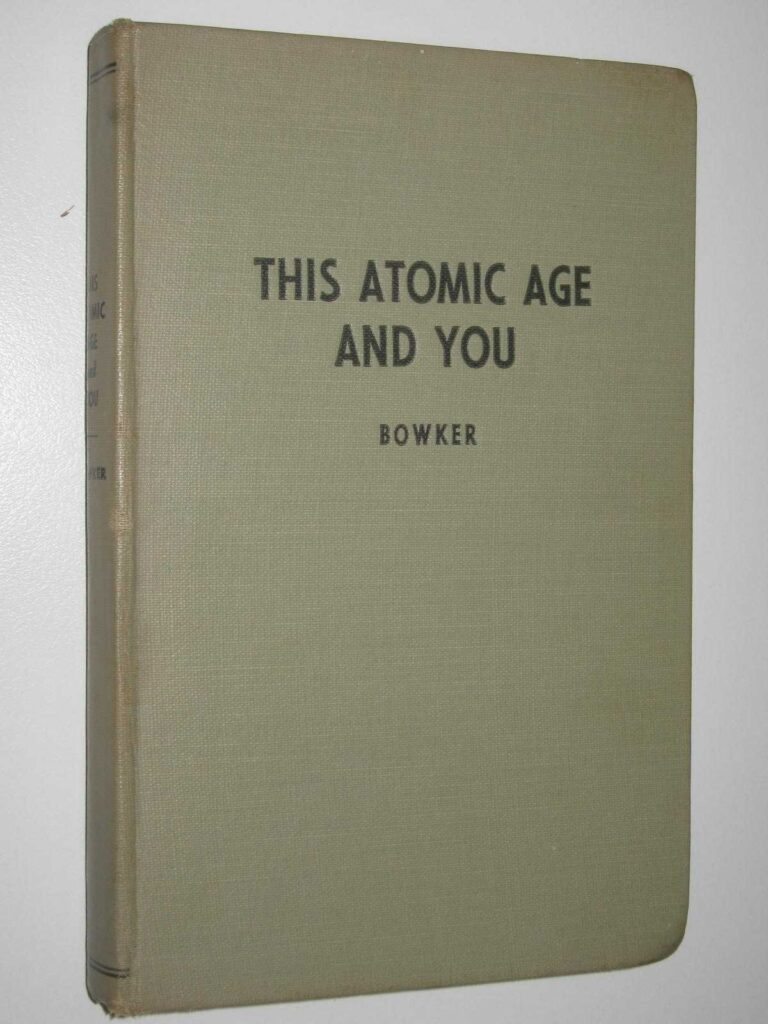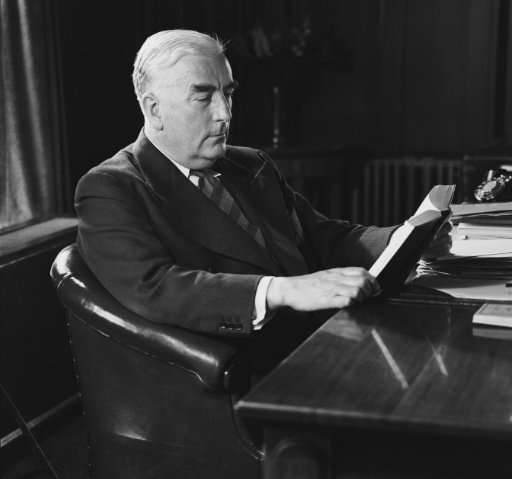John Earl Bowker, This Atomic Age – and You! (1948)
John Earl Bowker was a leading expert in x-rays and radiology, who became one of the earliest proponents of the anti-nuclear movement in Australia.
Born in Melbourne, Bowker started working at an electrical firm at the young age of 14, and developed an intense curiosity surrounding the then new technology of x-rays. To get closer to the fantastical machinery, he started volunteering two nights a week at the Homeopathic Hospital, and by 1921 he had been appointed as an x-ray technician. By 1925 he was head of the x-ray and electro-medical department at Austin Hospital in the Melbourne suburb of Heidelberg.
Having established a reputation for himself, in 1929 Bowker travelled to France to further his studies in radiology. There he met the Nobel Prize winning physicist and chemist Marie Curie, who he claimed told him of her plan to develop a ‘radium bomb’ which she hoped would cure cancer. It was soon discovered that radium actually caused cancer, and Curie’s death in 1934 would mark a turning point in public perceptions of its potentially devastating effects.
Nevertheless, Bowker returned from France with his reputation enhanced. Between 1932-38 he oversaw the installation of some of the largest x-ray plants in Australia, and published X-ray Apparatus and Technique, the first book on the technology ever authored by an Australian. With the outbreak of war, Bowker turned his attention to trying to develop a long-range electric vehicle that could help alleviate the Allies’ dependence on petroleum. However, despite some very positive press reports, the electric car he designed never saw widespread production.
Instead, with the dropping of the Atomic bomb on Hiroshima in August 1945, Bowker decided to dedicate himself to warning of the dangers of all things nuclear. In December that year he wrote in The Age that:
‘So complacent is the average person to the menace of atomic energy that there would almost seem to be a conspiracy of silence towards this matter. Even when great minds like Einstein and Smuts speak, their warnings appear to go unheeded by the man in the street. Perhaps it is that words are inadequate to express the nature of the diabolical secret that man, in an act of self-preservation, has wrested from nature.
Pre-occupied by the wrangles of a disordered economic system it may be that he is unable to focus his mind on this other threat to his existence. Perhaps neither silence nor words will meet the situation, but only a grim resolve on our part to discard all ancient prejudices and courageously come forward to the conference table and meet our fellow men in a spirit of tolerance and compromise. Perhaps also, by cultivating a mental detachment from the hysteria around us, we may see things in a better perspective. We may even see man chasing around plugging innumerable holes in a worn-out bucket, quite unconscious of the fact that a new one would save him a lot of trouble.’
This Atomic Age – and You! built on this theme of the urgent necessity of coming together in a spirit of peace and harmony, arguing that the only real solution for the nuclear threat was the creation of a global government, based on a federation model. Indeed, in a variation of the ‘nuclear deterrent’ theory, Bowker believed that the threat posed by nuclear weapons was such that it may turn out to be a positive, because it could force governments to compromise and end war in a manner which would otherwise never have been possible. Despite this positive effect, Bowker remained intractably opposed to not just nuclear weapons, but also to the development of nuclear power and even nuclear facilities for medical applications – the importance of which he felt had been exaggerated.
On this last point, Bowker has been proven wrong, and the Lucas Heights reactor opened by Menzies in 1958 continues to play an essential role in Australia’s national healthcare system. As far as the widespread implementation of nuclear power in Australia is concerned, Bowker need not have worried, because even without the fears of potential meltdowns, until the recent focus on carbon emissions it simply did not make sense for coal-rich Australia to go to the expense of building a network of power-generating reactors.
You might also like...
Sign up to our newsletter
Sign up for our monthly newsletter to hear the latest news and receive information about upcoming events.



